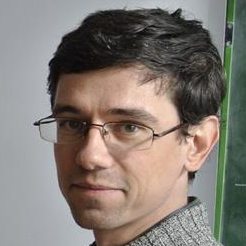Light on Dark Worlds—A Themed Issue in Honor of Professor Maxim Yu. Khlopov on the Occasion of His 70th Birthday
A special issue of Physics (ISSN 2624-8174). This special issue belongs to the section "High Energy Physics".
Deadline for manuscript submissions: closed (30 April 2022) | Viewed by 12807
Special Issue Editors
2. Department of Physics, Manhattan College, Riverdale, NY 10471, USA
Interests: astroparticle physics; cosmology; particle physics; advance statistics in data analysis
Special Issues, Collections and Topics in MDPI journals
2. Virtual Institute of Astroparticle Physics, University of Paris, CNRS, Astroparticle and Cosmology, F-75013 Paris, France
Interests: cosmoparticle physics; dark matter; cosmic rays; primordial black holes; particle physics
Special Issues, Collections and Topics in MDPI journals
2. N.I. Lobachevsky Institute of Mathematics and Mechanics, Kazan Federal University, Kremlevskaya Street 18, 420008 Kazan, Russia
Interests: cosmology; multidimensional gravity; primordial black holes
Special Issue Information
Dear Colleagues,
This Special Issue of Physics is dedicated to Professor Dr. Maxim Yu. Khlopov in honor of his 70th birthday. Professor Khlopov is a pioneer in cosmological probes of new physics and the development of cosmoparticle physics, studying the fundamental relationship between cosmology and particle physics in the cross-disciplinary links with its physical, cosmological, and astrophysical signatures. M. Yu. Khlopov’s interest in physics has been in studying the physical basis of modern cosmology and revealing nontrivial features of phenomena, going beyond the standard models of cosmology and particle physics. We open this Special Issue to all areas of physics, shedding light on such phenomena.
We congratulate M. Yu. Khlopov on his birthday and wish him many happy, fruitful years ahead, new fundamental discoveries, and talented disciples. We believe that this Special Issue constitutes a timely celebration of this respected scholar, researcher, and friend. Furthermore, we hope that this Special Issue will inspire scholars, especially junior researchers, to continue the advancement of physics.
Prof. Dr. Alexander S. Sakharov
Prof. Dr. Konstantin Belotsky
Prof. Dr. Sergey G. Rubin
Guest Editors
Manuscript Submission Information
Manuscripts should be submitted online at www.mdpi.com by registering and logging in to this website. Once you are registered, click here to go to the submission form. Manuscripts can be submitted until the deadline. All submissions that pass pre-check are peer-reviewed. Accepted papers will be published continuously in the journal (as soon as accepted) and will be listed together on the special issue website. Research articles, review articles as well as short communications are invited. For planned papers, a title and short abstract (about 100 words) can be sent to the Editorial Office for announcement on this website.
Submitted manuscripts should not have been published previously, nor be under consideration for publication elsewhere (except conference proceedings papers). All manuscripts are thoroughly refereed through a single-blind peer-review process. A guide for authors and other relevant information for submission of manuscripts is available on the Instructions for Authors page. Physics is an international peer-reviewed open access quarterly journal published by MDPI.
Please visit the Instructions for Authors page before submitting a manuscript. The Article Processing Charge (APC) for publication in this open access journal is 1400 CHF (Swiss Francs). Submitted papers should be well formatted and use good English. Authors may use MDPI's English editing service prior to publication or during author revisions.
Keywords
- Cosmoparticle physics
- Astroparticle physics
- Particle physics
- Dark matter
- Primordial black holes
- Inflation
- Baryosynthesis
- Dark matter
- Beyond Standard Model physics
- Antimatter
- Mirror world







